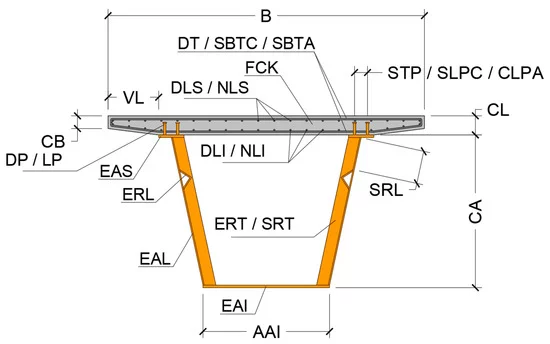 Acaban de publicarnos un artículo en la revista Mathematics, revista indexada en el primer cuartil del JCR. En este artículo tratamos de solucionar uno de los problemas que presentan las estructuras óptimas, que es su cercanía a los estados límite y demás restricciones. El trabajo se enmarca dentro del proyecto de investigación DIMALIFE que dirijo como investigador principal en la Universitat Politècnica de València.
Acaban de publicarnos un artículo en la revista Mathematics, revista indexada en el primer cuartil del JCR. En este artículo tratamos de solucionar uno de los problemas que presentan las estructuras óptimas, que es su cercanía a los estados límite y demás restricciones. El trabajo se enmarca dentro del proyecto de investigación DIMALIFE que dirijo como investigador principal en la Universitat Politècnica de València.
En efecto, el diseño de una estructura se lleva a cabo generalmente según un enfoque determinista. Sin embargo, todos los problemas estructurales tienen asociados parámetros iniciales inciertos que pueden diferir del valor de diseño. Esto se vuelve importante cuando el objetivo es alcanzar estructuras optimizadas, pues una pequeña variación de estos parámetros inciertos iniciales puede tener una gran influencia en el comportamiento estructural. El objetivo de la optimización de un diseño robusto es obtener un diseño óptimo con la menor variación posible de las funciones objetivas. Para ello, es necesaria una optimización probabilística para obtener los parámetros estadísticos que representen el valor medio y la variación de la función objetivo considerada. Sin embargo, una de las desventajas del diseño robusto óptimo es su alto costo de cálculo. En el presente artículo, la optimización del diseño robusto se aplica al diseño de un puente peatonal continuo de sección en cajón que sea óptimo en cuanto a su costo y robusto en cuanto a la estabilidad estructural. Además, se utiliza el muestreo de hipercubo latino y el metamodelo de kriging para hacer frente al alto costo computacional. Los resultados muestran que las principales variables que controlan el comportamiento estructural son la profundidad de la sección transversal y la resistencia a la compresión del hormigón y que se puede llegar a una solución de compromiso entre el coste óptimo y la robustez del diseño.
Abstract
The design of a structure is generally carried out according to a deterministic approach. However, all structural problems have associated initial uncertain parameters that can differ from the design value. This becomes important when the goal is to reach optimized structures, as a small variation of these initial uncertain parameters can have a big influence on the structural behavior. The objective of robust design optimization is to obtain an optimum design with the lowest possible variation of the objective functions. For this purpose, a probabilistic optimization is necessary to obtain the statistical parameters that represent the mean value and variation of the objective function considered. However, one of the disadvantages of the optimal robust design is its high computational cost. In this paper, robust design optimization is applied to design a continuous prestressed concrete box-girder pedestrian bridge that is optimum in terms of its cost and robust in terms of structural stability. Furthermore, Latin hypercube sampling and the kriging metamodel are used to deal with the high computational cost. Results show that the main variables that control the structural behavior are the depth of the cross-section and compressive strength of the concrete and that a compromise solution between the optimal cost and the robustness of the design can be reached.
Keywords
Robust design optimization; RDO; post-tensioned concrete; box-girder bridge; structural optimization; metamodel; kriging
Reference:
Penadés-Plà, V.; García-Segura, T.; Yepes, V. Robust Design Optimization for Low-Cost Concrete Box-Girder Bridge. Mathematics 2020, 8, 398.


